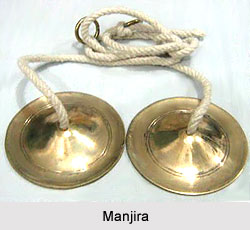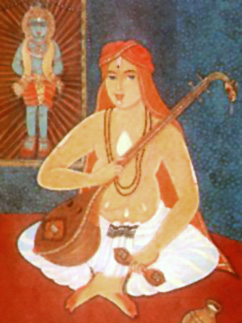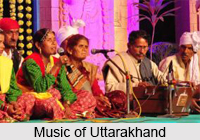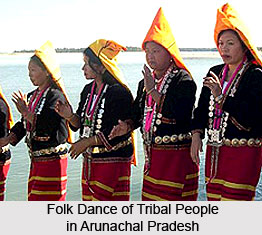Influences on Indian music have been many and varied. The impact of Indian Thought and Philosophy on Indian Classical Music and of the various customs on the external and internal natural aspects of our melodic musical culture has ever been one major expression of our cultural heritage.
Influence of Iconography
In the chain circle of influences (music-dance-sculpture-music) the art of iconography has also influenced Indian music. Visualization of music is an aspect of visualization of the non-visual or using symbols for comprehension, concentration, idealization and deification. Comprehending the non-visual in the human shape (many a time with modified human shape, with extra arms or faces) could be directly linked to Vedic thought; it is part of Indian theology and an aspect of polytheism. The raaga dhyanamurtis and later picturisation of raagas and raginis are the result of iconographical view of music and the paintings require to be understood in terms of the influence of iconography on music as well.
Influence of Language
The influence of the phonic aspects of language on raaga-music has also been quite immense. Sama gana permitted musical vowelling and the effect of sama depended on the type of gana for the desired effects (mystical/magical) and the sacrificial prescriptions. While music demanded vowelization of the words used by the language, language itself produced many such forms of words with phonetic contents suitable for exploitation by the vocal art. For example, the three words: balama, balama and balama; they all mean the same, but have slightly different phonetic contents very well exploited in art-music. Why one feels the Braj-bhasha compositions of Dhrupad, Dhamara, Khayal and Thumri are the best medium for exposition of a raaga is a subject requiring separate treatment. Here, in sum, it could be stated that the Braj Bhasha and ntikalina compositions have influenced the formal as well as the content aspects of the major classical forms and in doing so it has influenced the presentational aspects of raaga music.
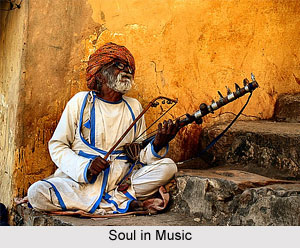 Influence of Oral Transmission
Influence of Oral Transmission
The oral-transmission technique, the Shruti - Smriti tradition, is also a part of Indian culture and the raaga has been preserved through this tradition. The song, the cija and bandisa served as the medium to help preservation of ragas and also education in music. This too is a legacy of Shruti - Smriti cultural tradition, and music was held as high as a Pancama-Veda, the fifth stream of knowledge. This aspect of Indian tradition has importance for the history of raagas, as oral transmission tradition is based on psychology of conservation and does not easily admit changes; and as such the pace of evolution and metamorphosis is slow.
Influence of Social Organisation
Initially, Indian music in its earliest form was a part of Hindu religion, and it was recognised and assimilated in the fibre of social and religious life and behaviours of the people. The supremacy of vocal music was experienced and held because vocal music could be wedded to words and words to music- integration denied to instrumental music which could only give or repeat or recast melody or the tunes. In the evolution of vocal music in Northern India, three different streams can be distinguished-
(a) Music with words in religious rituals and as part of religious service with emphasis on the meaning of words, songs, pada, samagana, being the oldest harbinger of this genre;
(b) Music with words with emphasis on the musical aspects as in prabandha-gana, and later in Dhrupad, Dhamar Gandharva-gana may be the oldest harbinger of this genre and
(c) Music with words with full emphasis on the musical aspects, with little or passing or no concern for the meaning of words - even treating words as "limiting" factors.
Though all these streams have run concurrently, the third stream came in greater flow with the phase of the Hindu professional musicians changing their faith to the Muslim religion under the new economic patronage of the Muslim rulers, particularly during the times of Akbar. The styles (Dhrupad-Dhamar), which had received characteristic sophistication and colour in the Vaisnava temples underwent subtle changes. The Dhrupad style gradually lost interest in the literary-religious import of the pada, and paid greater attention to the musical aspects. After a period of excellence the Dhrupad declined, perhaps because of inartistic weightage given to technical aspects and the emergence of the Khayal into vogue and then the preponderance thereof. This third stream was deliberately or unintentionally in competition with the older conservative, yet highly respected and profound style of the Dhrupad and in its own development tried to assimilate from it whatever was possible, whatever was aesthetically absorbable.
Influence of Nature
The influence of nature on Indian classical music has been immense. The association of music with nature is one of the strongest features of our Vedic culture. This is even reflected in the Vedic literature. Indian melodic music based on the simple and natural scale may appear to some to be primitive or ethnic, but it is a phenomenon of organic order. Indian musical scale has remained stable, as it is called a Natural scale. It is as ancient and as modern as the structure of physical body. It has in itself inherent harmonic structure based on the laws of physics and acquired by the human apparatus of voice under the natural evolution. One of the strongest links with nature can be seen in the still current belief and practice of treating certain raagas more appropriate for certain seasons, and raagas linked to certain hours or periods (prahams) of day or night.
When considered in the context of the age-old agricultural economy and festivals connected with the cycle of crops and seasons, the tunes good enough to make the total expression more meaningful and explicit flowered in the form of folk songs or recitals. These served, very suitably, to nourish and celebrate life. The cycle of seasons provided a cycle of events-rituals, resulting in associations and conventions.
Thus, it is evident from the above discussion that the influence on Indian music has been rather varied. All these various factors have gone into making Indian music and nourished and sustained it through the ages.
